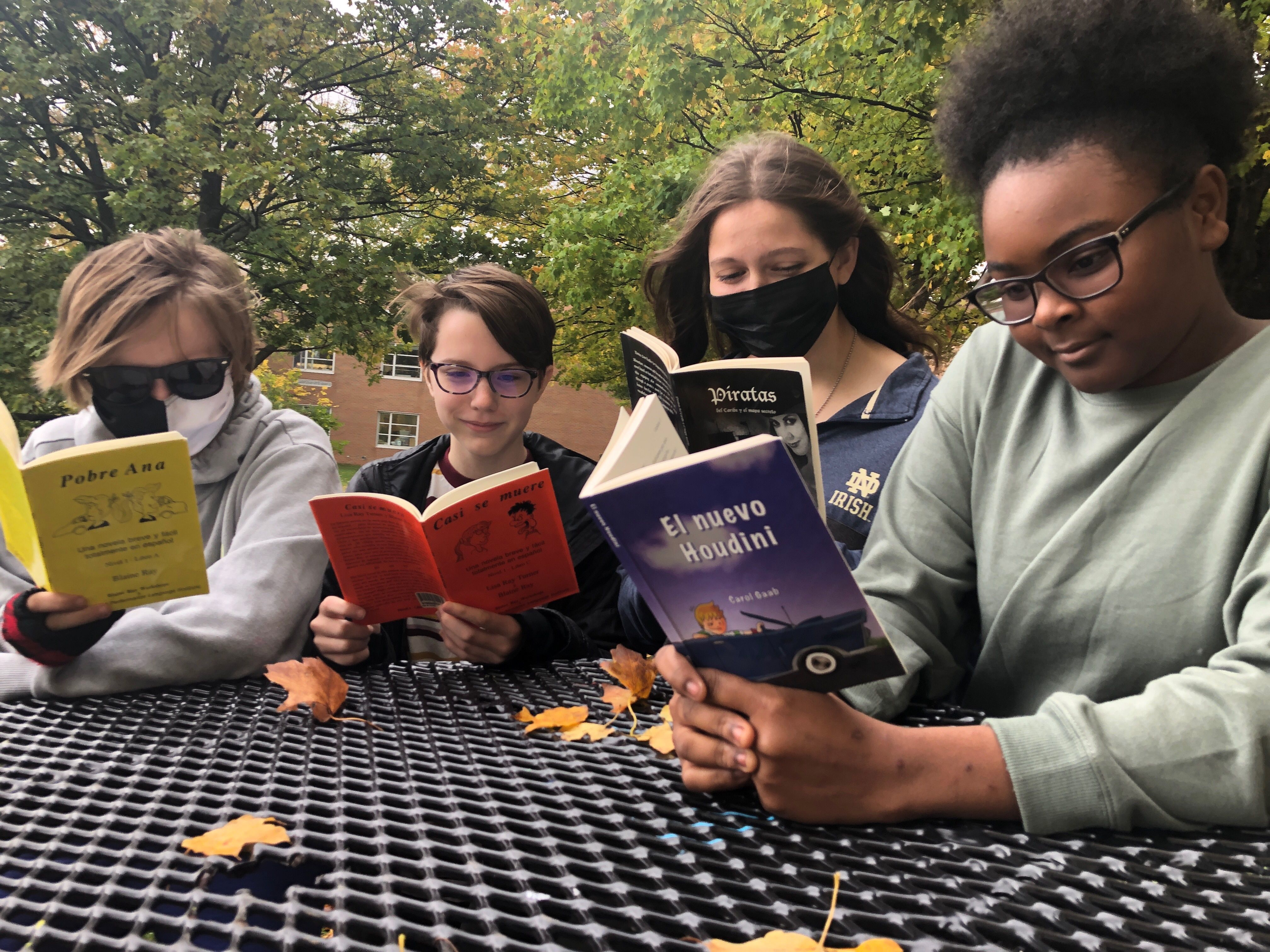
Thanks to our donors, a classroom enhancement grant from the East Grand Rapids Schools Foundation is changing the way middle schoolers learn Spanish.
The grant, for “Comprehensible Input Readers,” was one of 14 approved by the Foundation board. Altogether, the Foundation is funding more than $120,000 in grants this fall.
“Comprehensible input is an approach that focuses on using language students can understand even if they do not know all the words or structures in it,” says Spanish teacher Steve Brinks. “These readers allow students to learn the language naturally rather than consciously. As students read, they try to draw meaning out of the reading.
“I tell students that reading comprehensible input readers is as close as it gets to learning through osmosis.”
Middle school Spanish teacher Meredith Bonner applied for the grant along with Brinks. “Being able to turn the page of a physical book--in Spanish!--allows students to see their progress and they begin to realize just how much Spanish they understand,” she says. “My Spanish students often focus on what they don't yet know; these books change that conversation. When they turn a page, finish a chapter, or complete the book, I can say, ‘Look how much you read! Look what you understood!’”
There were already about 40 Spanish reading books at the middle school, but the grant will enable teachers to build robust classroom libraries. “These books are written especially for Spanish-language learners,” Bonner says. “They’re level-appropriate. The language used is the perfect balance of not being beyond students' level of understanding, not being so difficult that they feel discouraged, but also being at a level that challenges students and introduces new language.”
Students will benefit from the books in another way. “Having a wider selection of titles is not only exciting for the language acquisition,” Bonner says, “but also because these books introduce students to the culture and history of the Spanish-speaking world. Our Spanish library touches upon everything from the holidays and festivals and traditional foods of the Spanish-speaking world, expressions and colloquialisms used in specific cities and countries, the animals and natural wonders unique to Latin America, historical events, and legends of the Native Peoples of Latin America.”
Brinks says the new books will enable students to learn the language in a more natural way. “This process of acquisition is subconscious and similar to the process children go through when learning their first language,” he says. “By having a variety of books and allowing students to choose books that interest them, we hope they will be compelled and motivated to extract the meaning from the text. It is that continuous and sustained reading process that allows students to interact meaningfully with the language and to grow naturally in their acquisition of a second language.”
























